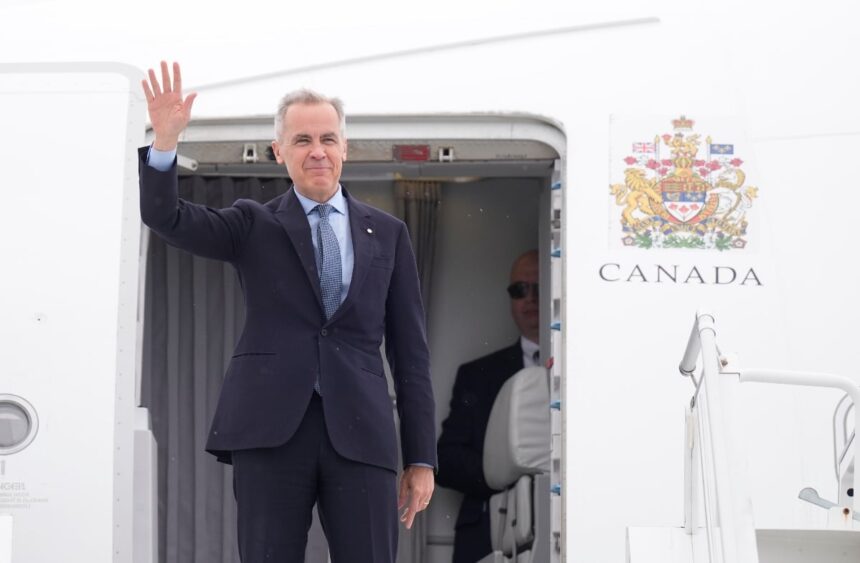As Canadian Finance Minister Mark Carney stepped into the marbled halls of the U.S. Treasury Department yesterday morning, the weight of Canada’s economic future rested squarely on his shoulders. The former Bank of England governor faces perhaps his most challenging diplomatic mission yet: convincing the second Trump administration to exempt Canada from sweeping tariffs that threaten to destabilize North American trade relations.
“These aren’t just negotiations about percentages and dollar figures,” Carney told reporters before entering the closed-door session. “This is about preserving a trading relationship that supports millions of jobs on both sides of the border.”
The stakes could hardly be higher. President Trump’s proposed 25% blanket tariff on Canadian goods would represent the most significant disruption to cross-border trade since the pre-CUSMA era. Analysis from the Business Council of Canada estimates potential damage exceeding $45 billion annually to Canadian exports, with particularly severe impacts on automotive manufacturing, agriculture, and energy sectors.
During his campaign, Trump repeatedly criticized Canada for what he called “taking advantage” of American generosity in trade relations—a characterization that Canadian officials and economists have consistently disputed. Data from Statistics Canada shows the trading relationship remains remarkably balanced, with approximately $1.8 trillion in goods and services crossing the border annually.
“The economic reality doesn’t support the rhetoric,” said Avery Chen, senior economist at the Canadian Centre for Policy Alternatives. “When you examine supply chains across North America, you see deeply integrated production systems that benefit both nations. Disrupting this would create profound economic pain on both sides.”
Treasury Secretary Scott Bessent appeared guardedly optimistic following the first round of discussions. “Minister Carney brings sophisticated financial expertise to these conversations. While the President’s position on tariffs remains firm, we recognize Canada’s unique position as America’s neighbor and essential trading partner.”
Sources close to the negotiations indicate that Carney’s team is pursuing a sector-by-sector approach, prioritizing defense of Canada’s automotive, aluminum, and agricultural industries. The strategy appears to involve offering targeted regulatory alignment in exchange for exemptions—a pragmatic approach that acknowledges the political realities in Washington.
Prime Minister Freeland, speaking from Ottawa, emphasized the importance of maintaining a united front. “Our approach to these negotiations transcends partisan politics. When Minister Carney speaks in Washington, he carries the collective voice of all Canadians who understand that our prosperity depends on stable, predictable trading relationships.”
The timing of these talks is particularly sensitive, coming just weeks before a planned North American Leaders’ Summit in Mexico City. The summit, intended to showcase continental cooperation, now risks being overshadowed by trade tensions.
For communities across Canada, particularly in manufacturing hubs like Windsor, Oshawa, and Hamilton, the outcome of these negotiations will have immediate and tangible impacts. The United Steelworkers union estimates that up to 85,000 jobs could be at risk if the full tariff regime is implemented without exemptions.
“We’re watching these talks more closely than any others in recent memory,” said Miguel Santos, who operates a small auto parts manufacturing facility in Mississauga. “My business supports twenty-eight families. If these tariffs go through as threatened, I honestly don’t know if we can survive.”
As negotiations continue through the week, both sides face mounting pressure to find common ground. For Canada, the challenge is securing meaningful exemptions while maintaining diplomatic dignity. For the Trump administration, the risk lies in potentially damaging a relationship with the country’s largest export market and closest ally.
Will economic rationality prevail over political posturing in this latest chapter of Canada-U.S. trade relations, or are we witnessing the beginning of a fundamental restructuring of North America’s economic architecture?























